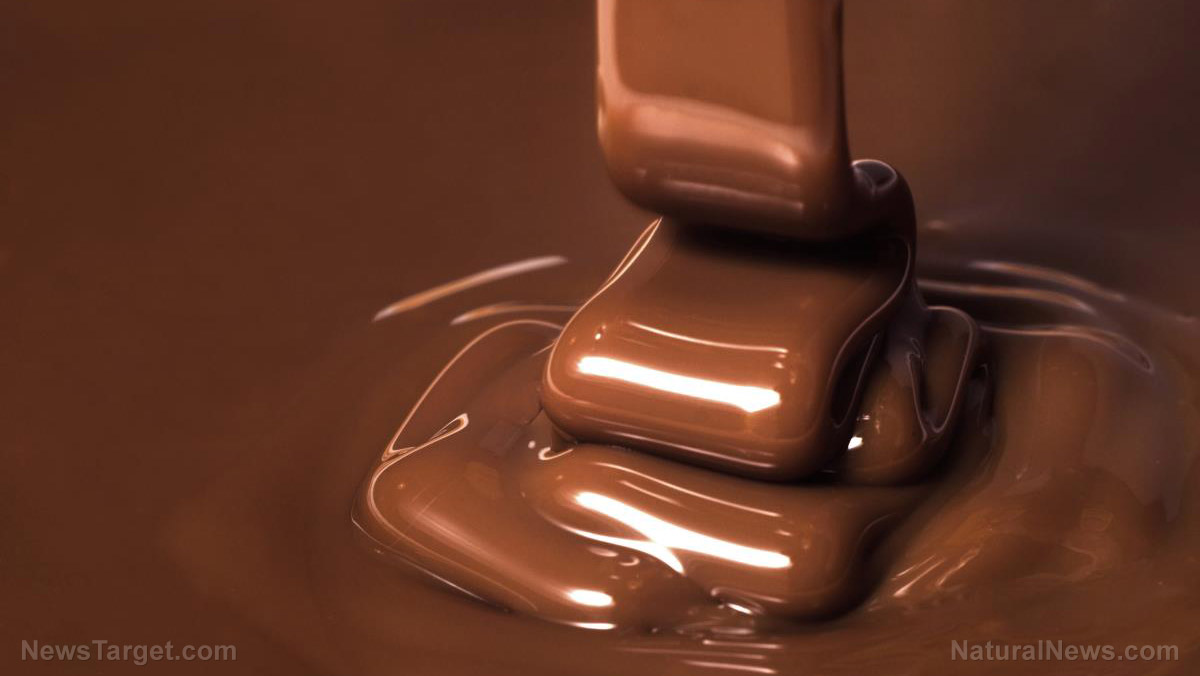The science of smell: German researchers successfully recreate the enticing aroma of chocolate bars

(Natural News) Chocolate is a popular food ingredient, snack, guilty pleasure, flavor, drink, and superfood. It is loved by many not only for its mood-lifting properties, but also for its rich, widely varying taste and pleasant aroma. A new study published in the Journal of Agricultural and Food Chemistry reported some interesting findings about this beloved food product. According to researchers from the Technical University of Munich who conducted the study, the alluring smell of chocolate is caused by volatile compounds which, at room temperature, turn into gases and mix in the air that people breathe. One of these compounds also happens to be present in roses and is responsible for the flowers’ unique fragrance.
Recreating the smell of dark chocolate
Thanks to extensive research, scientists have managed to identify some 600 compounds in chocolate. However, only a few of those have been found to affect olfactory receptors. And while previous studies have identified the compounds responsible for the smell of milk and dark chocolate, the amount of each needed to recreate the distinct smell of dark chocolate is still unknown. (Related: Dark chocolate can help improve bone growth in teens, says study.)
For their study, the German researchers selected two commercial dark chocolates with high cocoa content (90 and 99 percent) and distinguishable scents. They used a systematic sensomics approach to extract, separate, identify, and quantify the aroma-active compounds present in the chocolates. They also calculated the odor activity values (OAVs) of each compound and performed recombination experiments.
 | Discover how to prevent and reverse heart disease (and other cardio related events) with this free ebook: Written by popular Natural News writer Vicki Batt, this book includes everything you need to know about preventing heart disease, reversing hypertension, and nurturing your cardiac health without medication. Learn More. |
The researchers reported the identification of 69 aromatic compounds from the chocolates. Quantification of 49 revealed the presence of 28 odorants in the chocolate with 90 percent cocoa, and 30 odorants in the chocolate with 99 percent cocoa. Based on OAVs, the researchers found that dimethyl trisulfide, acetic acid, 2-methoxyphenol, 3-methylbutanoic acid, phenylacetic acid, vanillin, and linalool have the highest odor activities. They also identified and quantified new compounds in chocolate, such as B-ionone, which has a violet scent and is often found in perfumes and essential oils.
Using the measurements they obtained, the researchers reconstructed the smell of dark chocolate using odorless sunflower oil as the matrix base. High similarities between the reconstitution models and the store-bought bars used in their experiment proved that their identification and quantification of key odorants in dark chocolate were correct. A sensory panel of participants also verified their results.
What happens when you smell chocolate
According to Carolin Seyfried, one of the authors of the study: “[Flavor] is more than just what the tongue tastes – smell also plays a key role, with many compounds working together to create a unique sensory experience.”
Together with her colleague Michael Granvogl, Seyfried found that volatile compounds are responsible for the smell of dark chocolates. As these compounds easily turn into gases even at room temperature, they are inevitably inhaled by people, which brings these aromatic molecules in contact with more than 900 olfactory receptors located in the upper half the nostril. This makes people easily crave chocolate, even when they only get a whiff of its scent.
“Owing to its production with fermentation and roasting steps, the aroma of chocolate and cocoa products is very complex, containing a relatively high number of odorants, and thus more than 25 compounds were needed to simulate the overall aroma,” the researchers wrote in their article.
Their study is the first to report the successful identification and quantification of the key compounds responsible for the smell of dark chocolate. They were also the first to successfully recreate its scent.
Read more articles on food science at FoodScience.news.
Sources include:



